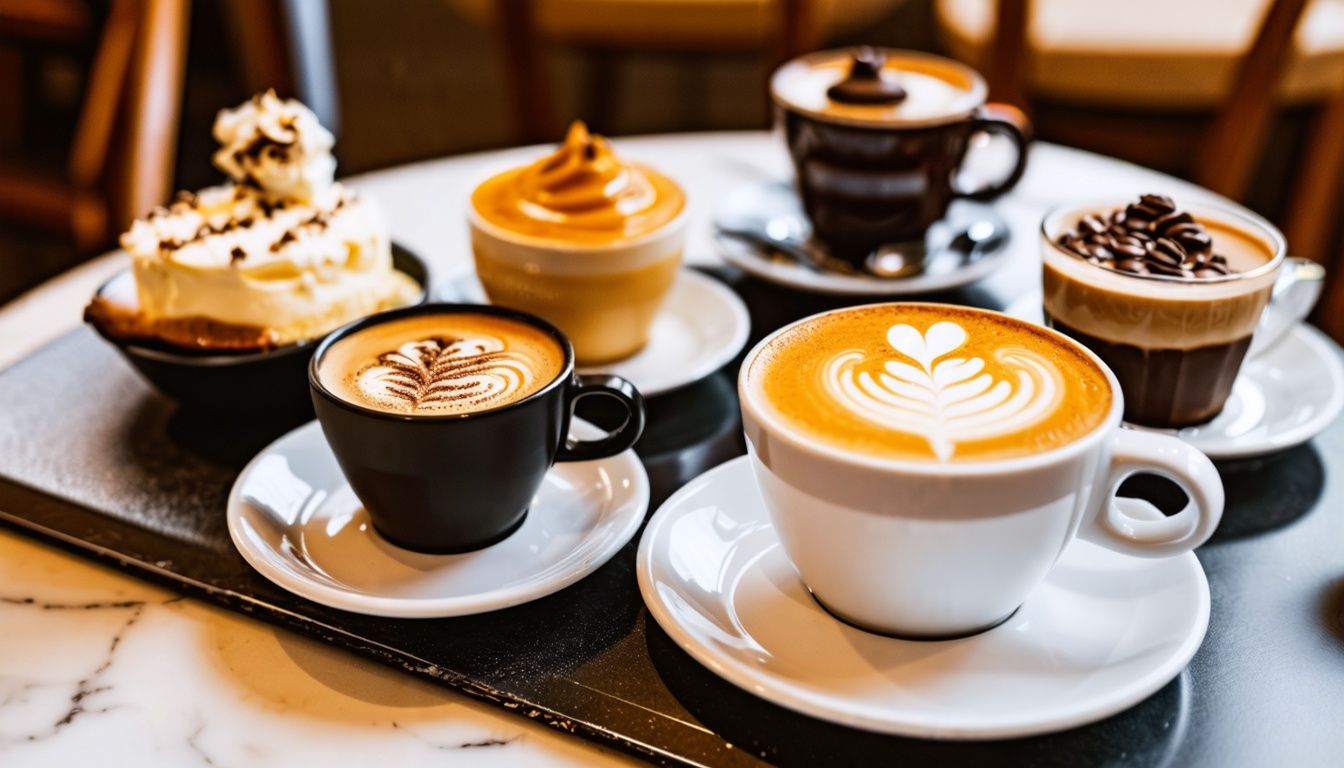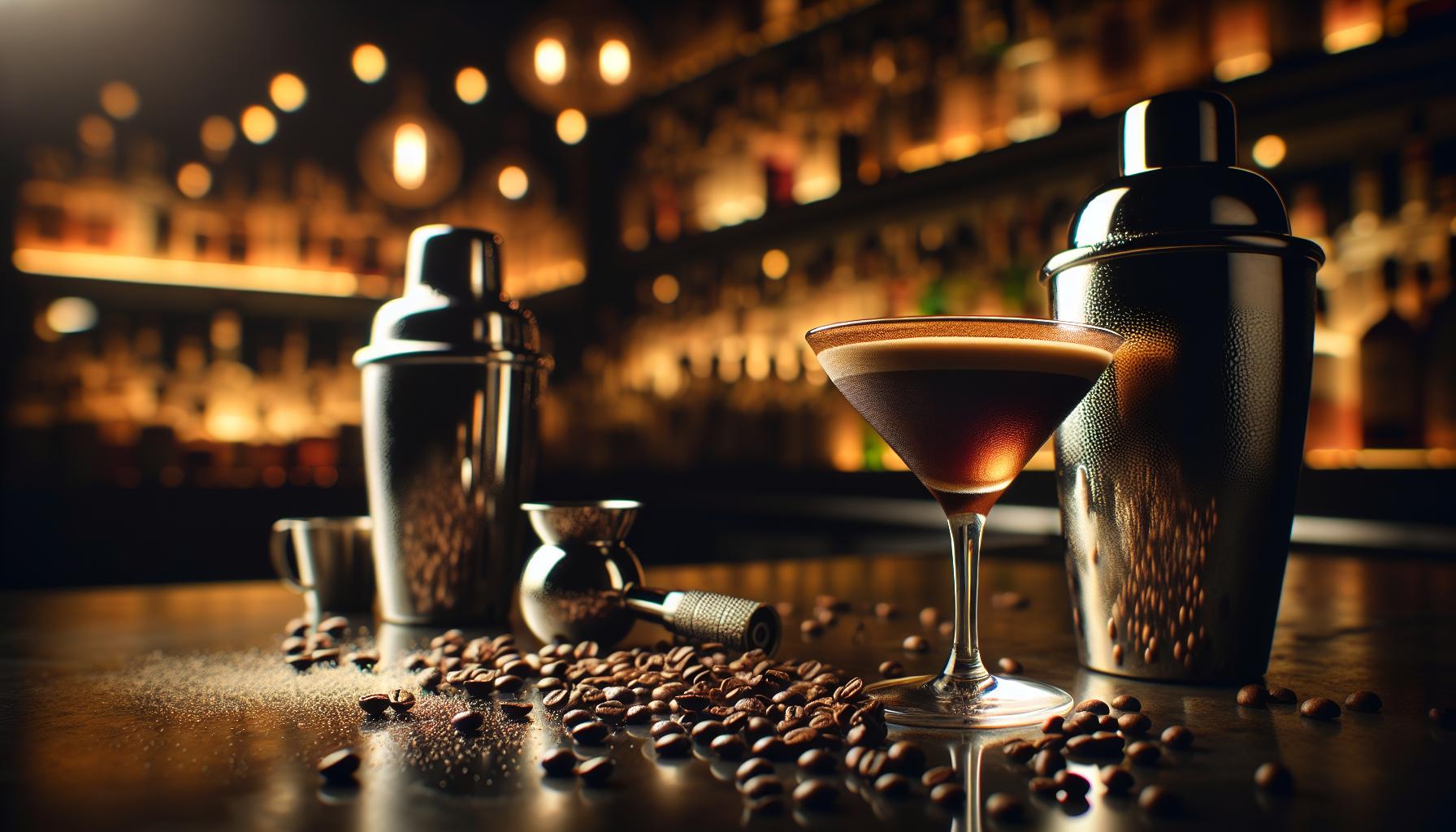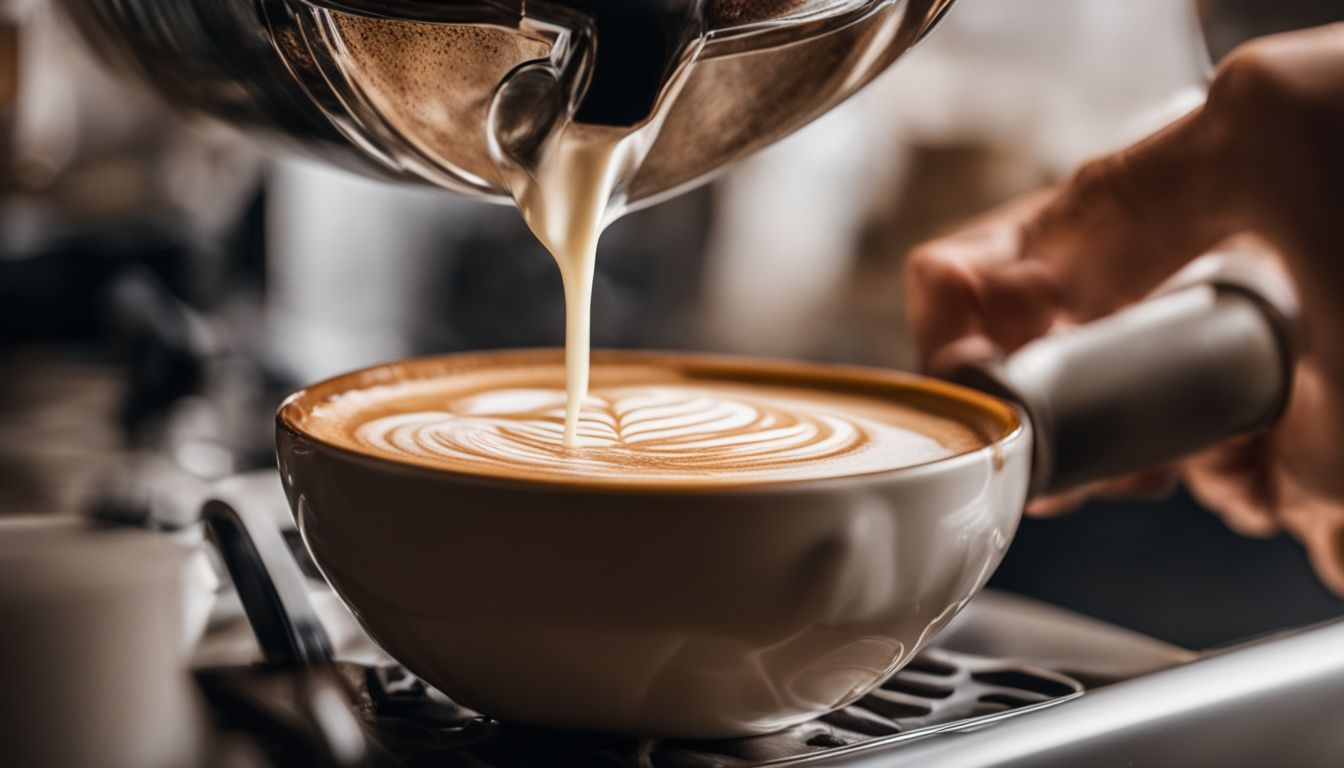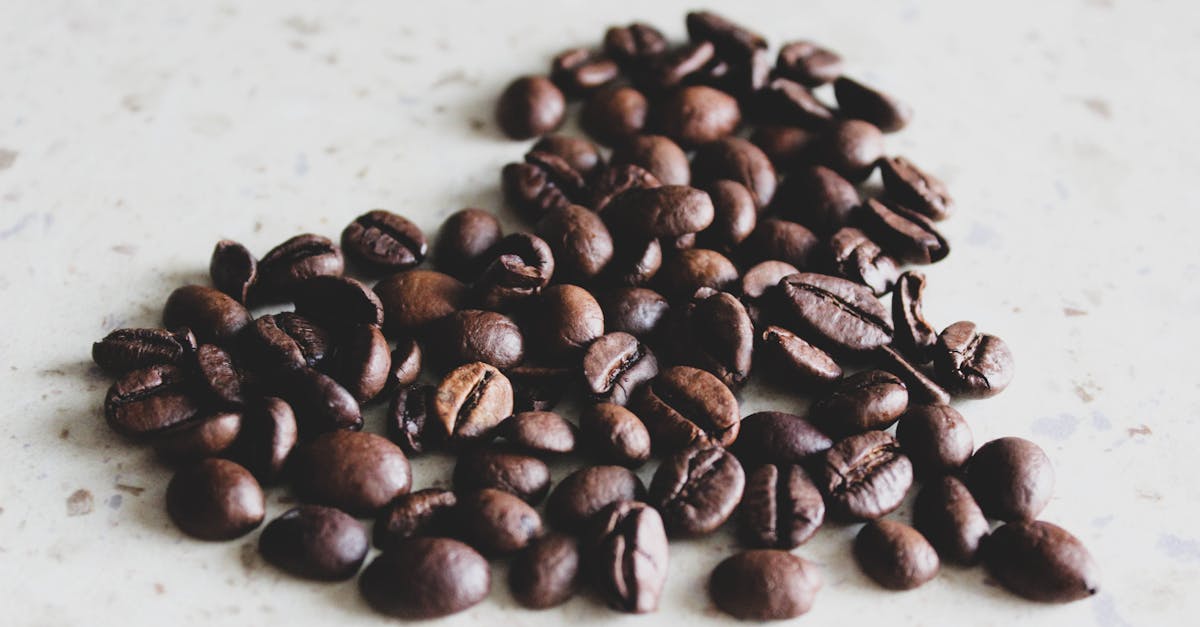Blog
How Much Caffeine Is In A Shot Of Espresso: Unveiling The Espresso’s Caffeine Content
Ever wondered about the caffeine kick in your espresso? Many coffee lovers crave that energy boost but worry about overdoing it.
A standard espresso shot packs 64 mg of caffeine. That’s quite a punch in a small package. This blog will break down espresso’s caffeine content, compare it to other drinks, and offer tips for smart consumption.
Exploring What Espresso Is

Espresso, an Italian coffee-brewing marvel, packs a punch in a tiny cup. This concentrated coffee shot results from forcing hot water through finely ground beans at high pressure. A standard single shot uses 7 grams of grounds, yielding 30 millilitres of liquid topped with a golden-brown ‘crema’.
Double shots double these amounts. Espresso machines, the key to this process, create the perfect blend of temperature, pressure, and timing. The result? A bold, flavourful brew that forms the base for many popular coffee drinks.
Unveiling the Average Caffeine Content in a Shot of Espresso
A standard espresso shot packs a powerful caffeine punch. You’ll find about 63-64 milligrams of caffeine in a single 1-ounce (30ml) serving. This concentrated brew offers one of the highest caffeine-to-volume ratios in the coffee world.

Starbucks ups the ante slightly, with their espresso shots containing 75 milligrams of caffeine. If you’re after an extra boost, a double espresso (doppio) delivers between 70-120 milligrams of caffeine in a 2-ounce pour.
Investigate Factors That Influence Espresso’s Caffeine Content
The caffeine content in espresso varies based on several key factors. Here’s a breakdown of the main influences:
- Bean type: Robusta beans pack twice the caffeine of Arabica, resulting in a more potent espresso.
- Grind fineness: Finer grounds increase surface area, leading to higher caffeine extraction.
- Brewing time: Longer extraction periods yield more caffeine in the final shot.
- Coffee quantity: Using more ground coffee naturally increases the caffeine content.
- Water temperature: Hotter water extracts caffeine more efficiently, boosting levels in the cup.
- Pressure: Higher pressure during brewing forces more caffeine out of the grounds.
- Roast level: Contrary to popular belief, lighter roasts often contain more caffeine than darker ones.
- Brewing ratio: The standard 1:2 coffee-to-water ratio affects final caffeine concentration.
- Water quality: Mineral content in water can impact caffeine extraction efficiency.
- Brewing method: Different espresso machines may yield varying caffeine levels due to design differences.
Compare Caffeine Levels: Espresso vs. Regular Coffee
Espresso packs a powerful caffeine punch compared to regular coffee. Let’s break down the numbers:
| Coffee Type | Serving Size | Caffeine Content |
|---|---|---|
| Espresso | 1 oz (30 ml) | 64 mg |
| Regular Coffee | 8 oz (240 ml) | 95 mg |
You’ll notice espresso has more caffeine per ounce. A single shot contains 64 mg in just 30 ml. Regular coffee offers 95 mg in 240 ml. Per ounce, espresso delivers about 5 times more caffeine than drip coffee. An 8 oz cup of espresso would contain a whopping 504 mg of caffeine. That’s over five times the amount in a regular cup. Espresso’s concentrated nature explains its higher caffeine content. You get a quick energy boost from a small serving. Regular coffee provides a more gradual caffeine release over a larger volume. Choose wisely based on your caffeine needs and preferences.
Deep Dives into Espresso Caffeine Details
Let’s look closer at espresso’s caffeine content. You’ll find surprising details about your favourite brew.
Analyse Caffeine Levels Across Different Espresso Based Drinks
Espresso-based drinks offer varying caffeine levels. Your favourite coffee shop likely serves a range of these beverages, each with its unique caffeine content.
| Drink | Size | Caffeine Content (mg) |
|---|---|---|
| Single Shot Espresso | 1 oz (30ml) | 75 |
| Double Espresso | 2 oz (60ml) | 150 |
| Cappuccino/Latte/Macchiato | Short/Tall | 75 |
| Cappuccino/Latte/Macchiato | Grande/Venti | 150 |
| Mocha | Short/Tall | 90 |
| Mocha | Grande | 175 |
| Mocha | Venti | 180 |
| Flat White | Short/Tall | 90 |
| Flat White | Grande/Venti | 130 |
| Americano | Short | 75 |
| Americano | Tall | 150 |
| Americano | Grande | 225 |
| Americano | Venti | 300 |
Americanos pack the most caffeine punch, with a venti size containing 300mg. Double espressos and grande/venti cappuccinos, lattes, and macchiatos follow at 150mg. Mochas vary from 90mg to 180mg based on size. Flat whites range from 90mg to 130mg. Single shot espressos contain 75mg of caffeine. You’ll find lower caffeine levels in short/tall cappuccinos, lattes, and macchiatos at 75mg. These figures help you gauge your caffeine intake across different espresso-based drinks.
Offer Tips for Managing Your Caffeine Intake
Caffeine intake management is crucial for your health and well-being. Here are practical tips to help you control your espresso consumption:
- Track your intake: Use a coffee diary or app to log each espresso shot. Aim for no more than 400 milligrams of caffeine daily.
- Set a cut-off time: Stop drinking espresso by 2 PM to avoid sleep disruptions.
- Alternate with decaf: Swap every other espresso for a decaffeinated option to reduce overall caffeine consumption.
- Measure your shots: Use a scale to ensure consistent 30ml servings, controlling caffeine levels.
- Slow your sipping: Savour your espresso over 15 minutes instead of gulping it down.
- Stay hydrated: Drink a glass of water with each espresso to balance fluid intake.
- Limit additional sources: Be mindful of caffeine in chocolate, tea, and energy drinks.
- Choose your beans wisely: Opt for Arabica over Robusta beans for lower caffeine content.
- Mind your brewing method: French press and cold brew often contain more caffeine than espresso.
- Listen to your body: Pay attention to signs of overconsumption like jitters or increased heart rate.
Discover Ways to Enjoy Espresso in Various Forms

Espresso offers versatile enjoyment beyond the standard shot. Here are several ways to savour this robust coffee:
- Macchiato: Add a dollop of milk foam to your espresso for a creamy twist.
- Cappuccino: Blend equal parts espresso, steamed milk, and milk foam for a classic Italian drink.
- Latte: Mix espresso with steamed milk and a thin layer of foam for a milder coffee experience.
- Americano: Dilute espresso with hot water for a drink similar to filter coffee.
- Flavoured syrups: Enhance your espresso with vanilla, caramel, or hazelnut syrups for added sweetness.
- Espresso cocktails: Use espresso as a base for cocktails like Espresso Martini or Affogato.
- Desserts: Incorporate espresso into tiramisu, coffee ice cream, or chocolate mousse for rich flavour.
- Moka pot brewing: Make espresso-like coffee at home using this stovetop device.
- French press method: Create a strong brew similar to espresso using coarsely ground coffee beans.
- Espresso pairing: Enjoy your shot with a small pastry or biscotti to complement the flavours.
- Sipping technique: Take small sips to fully appreciate the intense aromas and tastes of your espresso.
Conclusion
You’ve uncovered the caffeine secrets of espresso. A standard shot packs 64mg, with Robusta beans doubling that punch. Starbucks offers 75mg in a single shot, 150mg in a double. Limit your intake to 400mg daily, or 200mg if pregnant.
Enjoy espresso solo, in lattes, cocktails, or baked goods. Decaf options provide a lower-caffeine alternative for sensitive drinkers.
FAQs
How much caffeine is in a shot of espresso?
A single shot of espresso typically contains 64mg of caffeine. This can vary based on the coffee beans, roast, and preparation method.
Does espresso have more caffeine than regular coffee?
No, espresso doesn’t have more caffeine per serving. A 240 ml cup of brewed coffee has about 95 mg of caffeine, while a 30 ml espresso shot has 63 mg.
What factors affect caffeine content in espresso?
Factors include: type of coffee beans (Arabica or Robusta), roast level, grind size, and extraction time. Darker roasts and finer grinds often yield more caffeine.
How does decaf espresso compare to regular espresso?
Decaf espresso contains significantly less caffeine… usually about 3-15 mg per shot, compared to 63 mg in regular espresso.



